Charging, along with range, are the main concerns for new electric car buyers. There is much confusion when it comes to the topic of charging especially when it comes to the plug types, speed, and even cost. This guide will cover everything you need to know about charging your electric car.
Types of Electric Vehicles
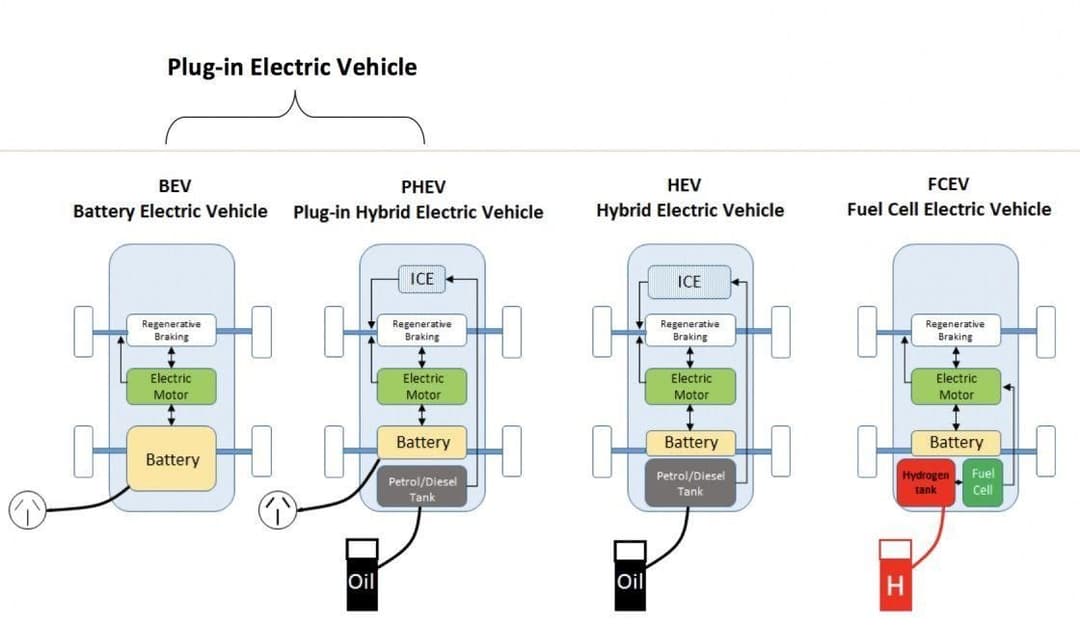
When it comes to electric vehicles there is often confusion around the different types of EVs: BEV, PHEV, HEV and FCEV. For the purposes of this charging guide we are only focused on BEV and PHEV which get their fuel from being ‘charged’ i.e. plugged in. This can be done at home via a power point, wall-mounted charger or at public charging stations. The average charging time can range anywhere from 30 hours (AC Charging) to 30 minutes (DC Fast Charging) for a full charge which will typically give 400 km of range.
| Type | Definition |
| BEV | Battery-electric vehicles (BEV) are any motor vehicle that only uses a high-density battery as its source of ‘juice’ and do not emit any pollutants from the tailpipe. View all BEV’s available in Australia here. |
| PHEV | Plug-in hybrid electric vehicles (PHEV) are powered by an ICE engine (fuel) and small electric motor (battery). The electric motor can drive the car independently in most situations for emissions-free driving, though it often works with the engine to save fuel, improve performance, and enable longer range. Examples include the Mitsubishi Outlander PHEV and MG HS Plug-in Hybrid. |
4 Types of EV Charging Connectors
There are basically two ways to charge an electric car:
- AC Charging - Slow charging at home, destinations, at work using AC charge points.
- DC charging - Fast/rapid charging, usually done at public charging stations.
In Australia, all AC charging is done using the type 2 plug, and DC charging the CCS plug type and to a lesser degree the CHAdeMO plug. The table below shows the key plug types you need to familiarise yourself with when it comes to charging an electric car in Australia.
Note: When we talk about plugs it relates to the head at the end of the charging cable
Type 2
Type 2 (MENNEKES) is the default port used by all battery-electric vehicles (BEVs) and plug-in hybrids (PHEVs) in the market. It charges using an alternating current (AC) which is converted to DC using the EV's onboard charger. The speed at which an EV can be charged using this port will depends the onboard charger. The onboard charger limits of most electric cars range from 3.6 kW to 11 kW.
CCS
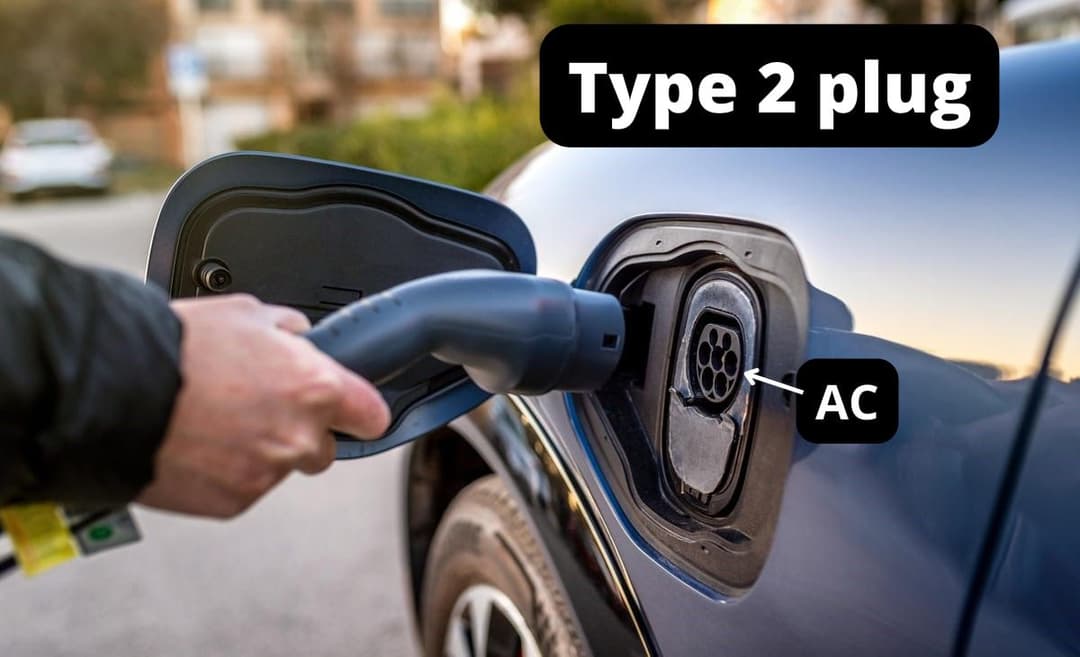
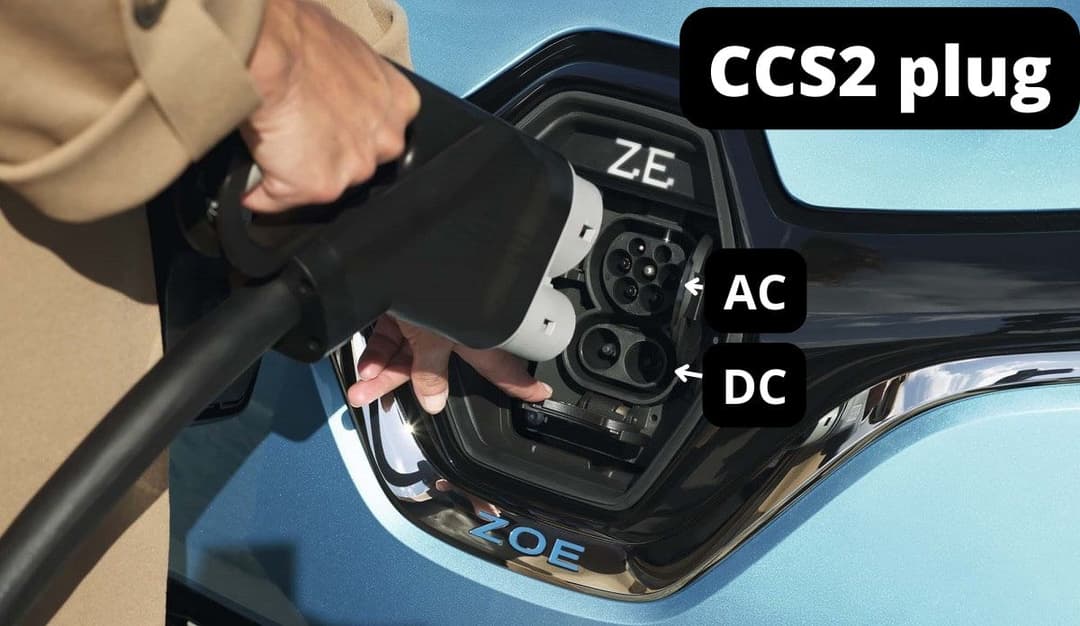
CCS is easily the most common plug type for DC charging in Australia (and Europe) and has essentially been accepted as the national standard. Electric vehicles sold in Australia today that use the CCS standard come with a hybrid charging port known as CCS Combo 2 (CCS2). CCS stands for ‘Combined Charging System’, and a plug design that combines support for charging via both AC and DC. The design features an additional two pins below a standard Type 2 plug, which facilitates high-speed DC charging. This means it can support both AC and DC fast charging.
If you have a CCS Combo 2 socket in your car and want to charge at home on AC, you insert a normal Type 2 plug into the upper section of the port (refer below image).
For DC fast charging, you'll plug the CCS2 plug into the port, which will fit in both the top and bottom sections.
CHAdeMO
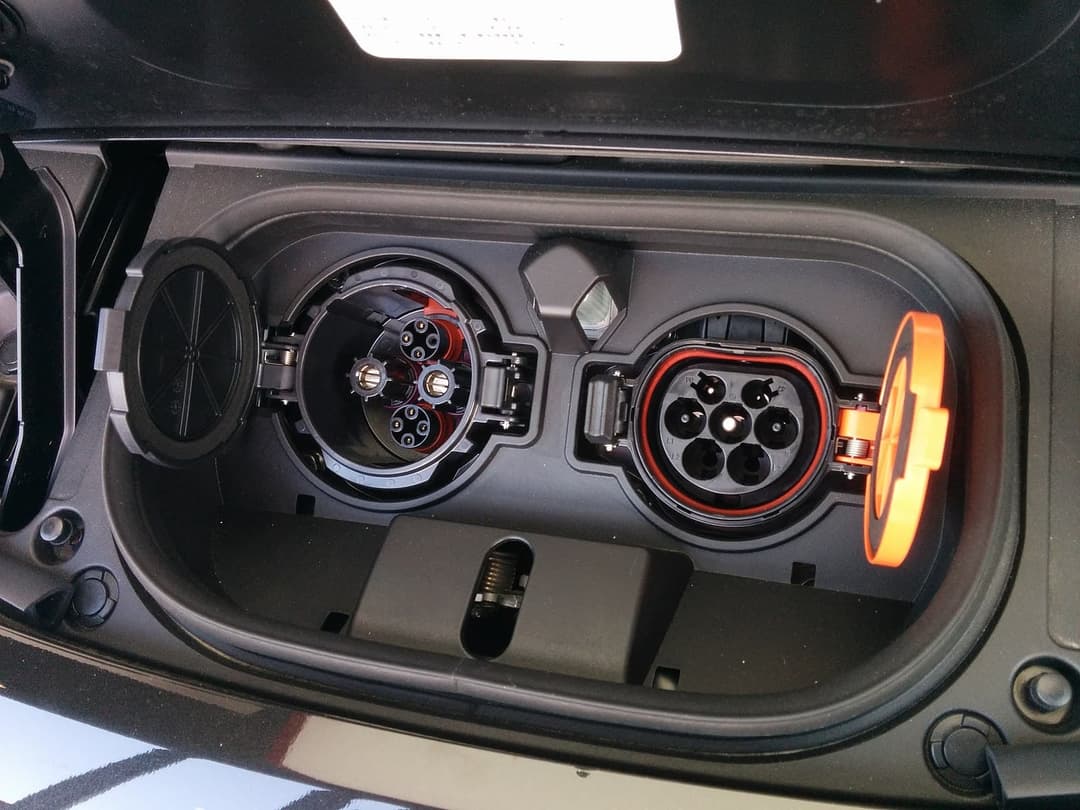
CHAdeMO which is used by first and second-generation Nissan Leaf and Lexus UX300e. This will likely be phased out as manufacturers try to harmonise standards. For example, the upcoming Nissan Ariya crossover uses CCS.
In Australia, EVs that use the CHAdeMO standard do not have a combined charging port like CCS, instead there is a separate Type 2 and CHAdeMO port - typically side-by-side.
Tesla
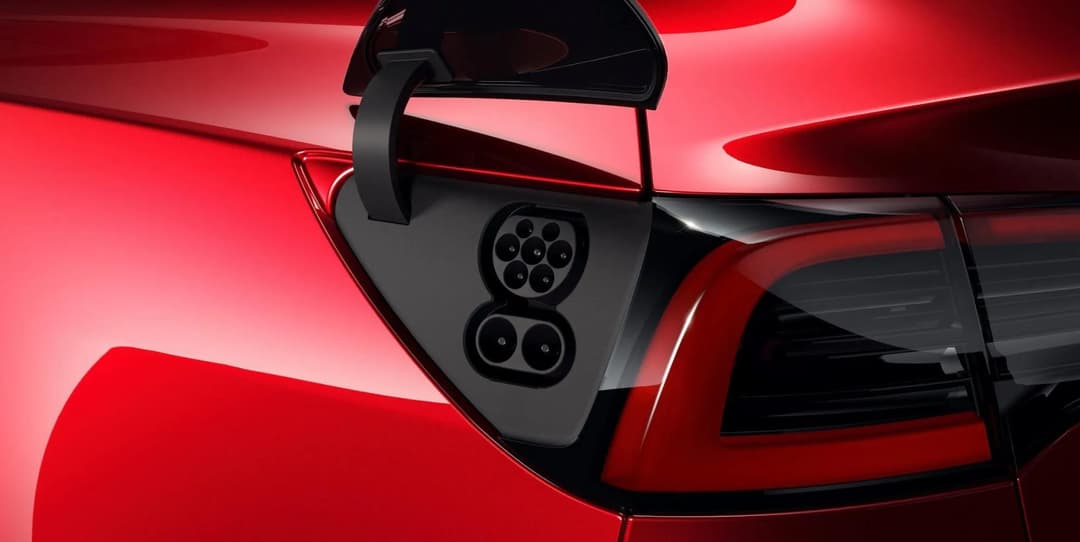
In Australia and Europe, all new Tesla vehicles use the CCS standard. In North America (United States and Canada), Tesla uses the North American Charging Standard, which uses a combined AC/DC charging system in the same plug.
EV Charging at Home
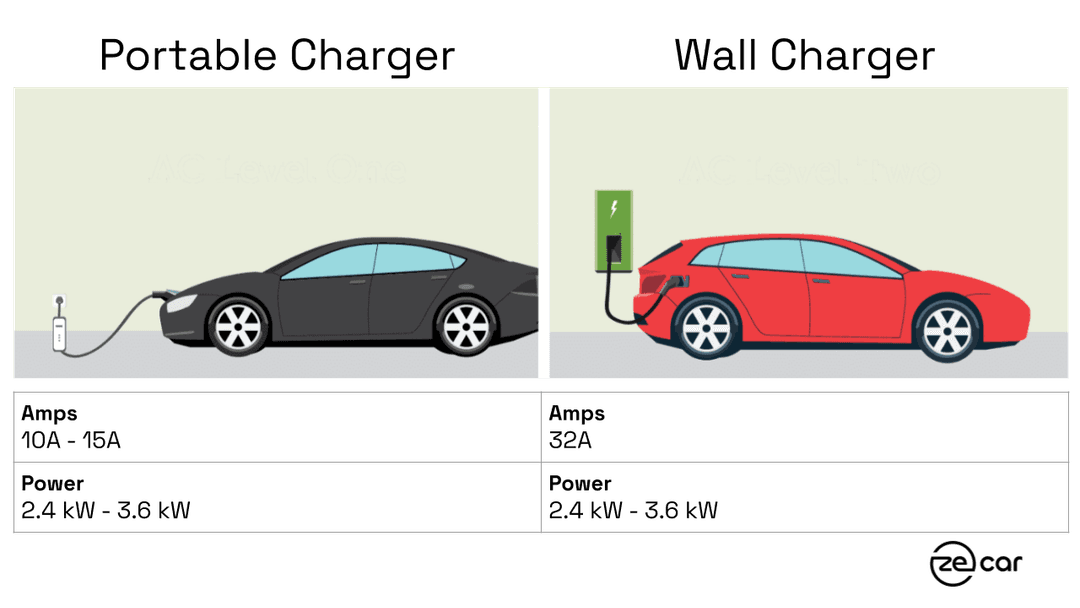
Charging your electric car at home can be done in basically two ways.
Level 1 Charger: Using a 'granny' or 'trickle' chargers
Known as level 1 charging, typically describe the slowest way but most basic and cheapest charging setup. It comprises a portable charger (which often comes with the car) and an existing powerpoint.
If you are using an existing powerpoint then there is no need to hire an electrician. Just plug and charge.
These generally charge at slower rates due to limitations of the complimentary portable charger which is generally limited to between 10A to 15A.
Level 2 Charger: Using a wall-mounted charger
Known as level 2 charging, it typically involves the installation of a fixed charging smart unit on the wall, connected to a dedicated power source. The installation of these units will need to be completed by a licensed electrician.
This is a popular option for those that own their property and have the autonomy to upgrade their electrical infrastructure as they wish.
These chargers generally provide faster output, capable of up to 32A, but the speed will also be limited to the power supply.
In addition to speed, wall chargers are often also installed due to their smart charging functionality such as scheduled charging, solar charging, and load balancing.
EV Charging at Public Stations
EV Charging at Public Stations is typically done using two types of chargers
Level 2 and 3: Destination Chargers
These are typically located at shopping centres and public car parks. Occasionally you will see DC destination chargers but they are almost always AC chargers. These locations typically have commercial power supply meaning they'll like have three-phase power onsite meaning you'll be able to maximise the AC charging speed of your electric vehicle, for most EVs in the market this is 11 kW. If you're at home using single=phase power your maximum speed is likely 7 kW.
Level 2: Fast DC Chargers
These are typically located along/near key transport routes. You'll sometimes see these in shopping centres and increasingly petrol stations like Ampol and BP. Public DC Chargers provide power output from as little as 25 kW (Free Jolt Chargers) to 350 kW (Chargefox), with 50 kW to 150 kW being the most power output.
EV Charging Levels Explained
EV charging is divided into three levels: level 1, level 2 and level 3. This system is intended to be a 'simple' way to categorise charging speeds. Generally speaking, the higher the charge level, the higher the output of the charger, the faster the charging speed.
Level 1 Charging: Powerpoint and Portable Charger
Level 1 chargers, also known as 'granny' or 'trickle' chargers, typically describe the slowest way but most basic and cheapest charging setup. It comprises a portable charger (which often comes with the car) and an existing power point.
Level 2 Charging: Dedicated Wall Mounted Charger
A Level 2 charger typically involves the installation of a fixed charging smart unit on the wall, connected to a dedicated power source. The installation of these units will need to be completed by a licensed electrician.
Level 3: Fast DC Charger
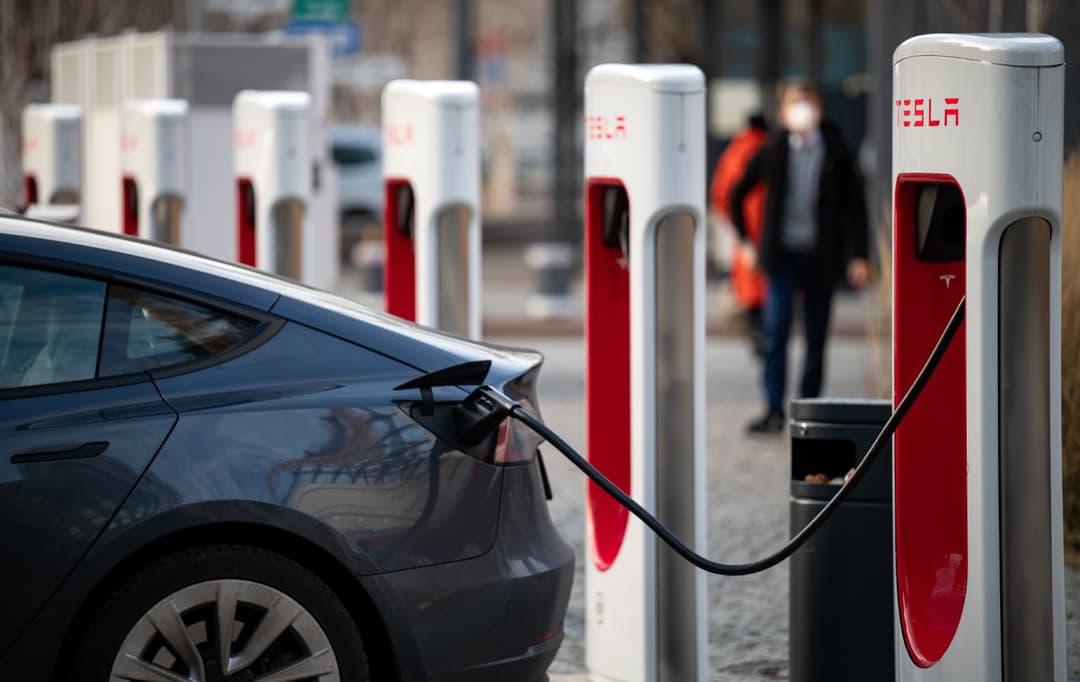
Level 3 charger involves using the DC fast chargers at the major charging networks including Tesla's Supercharger network for fast charging.
How Long Does it Take To Charge Your Electric Vehicle?
Below we've outlined the charging times you can expect from the different types of charge levels. We've used the Tesla Model 3 RWD as an example as its 57.5 kWh battery is a close match to the average EV battery size. It also happens to be the most popular electric car on the road. For personalised estimates use our EV charging calculator.
Level 1- Charge times for portable charger
Slow AC charging, also referred to as level 1 or 2, is typically done at home, work or shopping centre car parks.
The Model 3 is capable of charging at a maximum of 11 kW with its onboard charger, however, this requires a three-phase power supply and charger. The power supply in homes is likely single phase, meaning the maximum power you can draw from the onboard charger is ~7 kW.
Charging a Model 3 using a portable charger and a standard 10A power will add 20km of range per hour. A full charge will take 26 hours.
Level 2 - Charger times for Wallbox charger
If a wall-mounted charger is used to charge the Model 3, like the Tesla Wall Connector. The charger power output can be increased to 7.2 kW, this will increase the range added per hour to 61km and reduce the time for a fully charge to less than 9 hours.
Level 3- Charge times for Fast/Rapid DC Charger
Charging a Tesla Model 3 from 10% to 80% at a fast/rapid DC charging station can be done in as little as 25 minutes, providing 340km of range.
Note that the times shown are only a guide only. Other factors that might vary the actual charging time of your car.
EV Charging Bottom Line
There is a big focus on the speed of charging but the reality is people don't drive that much. Many owners will charge from home (up to 90%), and those that charge at home many do just fine using a portable granny charger.
If you drive long distances or you want the convenience and don't mind spending about $2,000 on a wall charger (including installation), then you'll be able to more than half your charging times.
For those that don't have access to charging at home, unfortunately, you'll be relying on the rollout of additional public charging infrastructure.
As for whether the electricity grid can handle all the EVs. It's not something you need to worry about right now, we have plenty of capacity in our grid to support EV uptake for the next several years. Going forward there will be a push for utilities to incentivise and potentially mandate smart charging to ensure EV charging is spread throughout the day. This will minimise the need to invest in additional infrastructure to support EVs.
About the author
Stay up to date with the latest EV news
- Get the latest news and update
- New EV model releases
- Get money savings-deal










